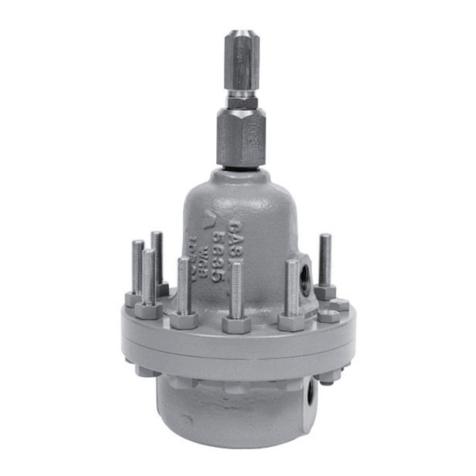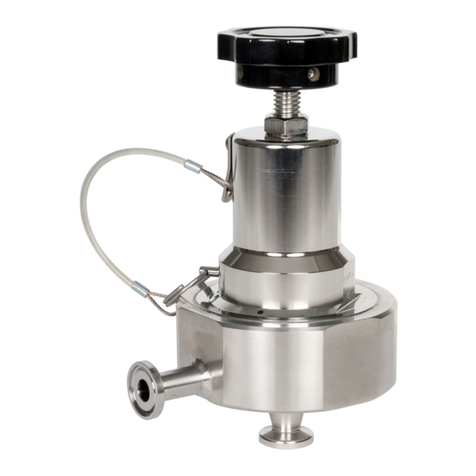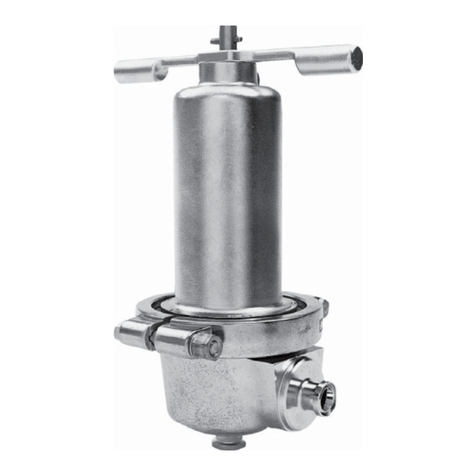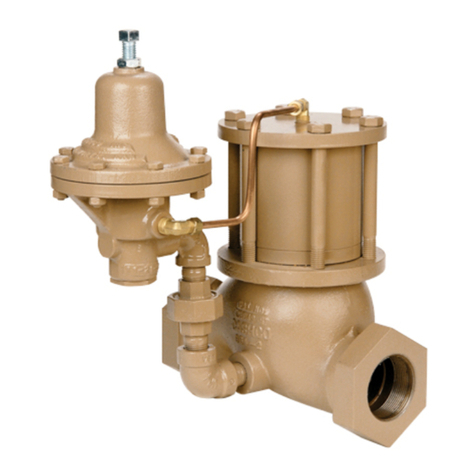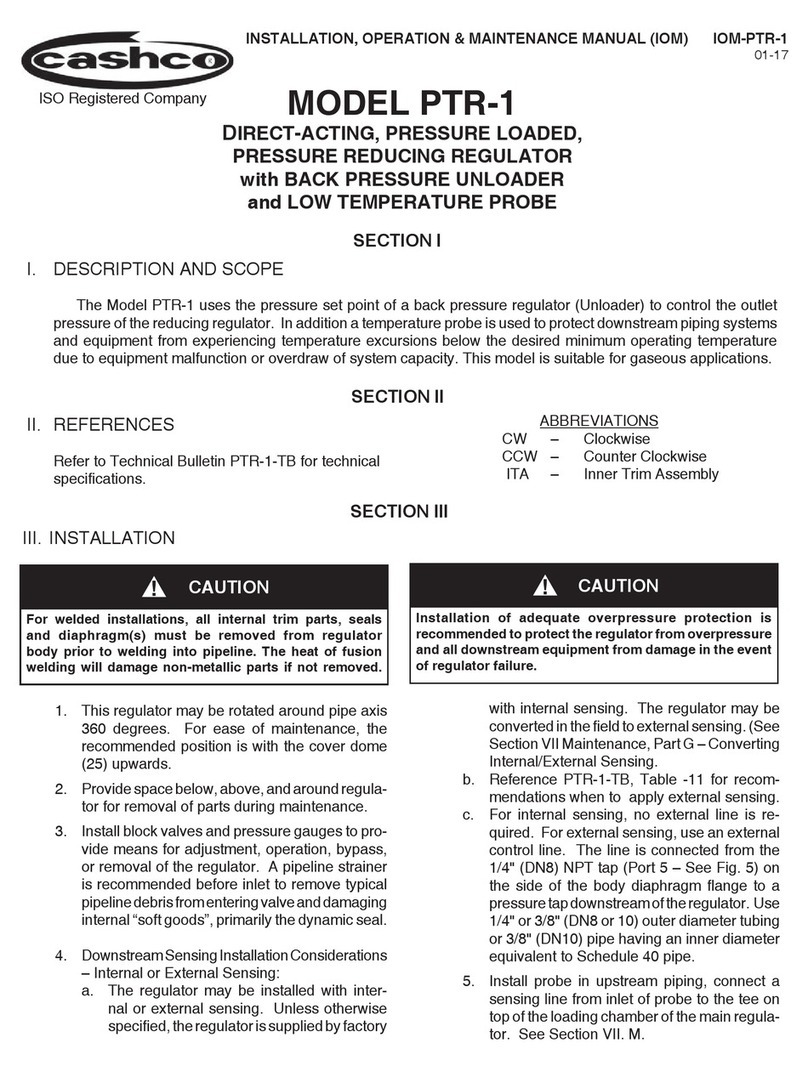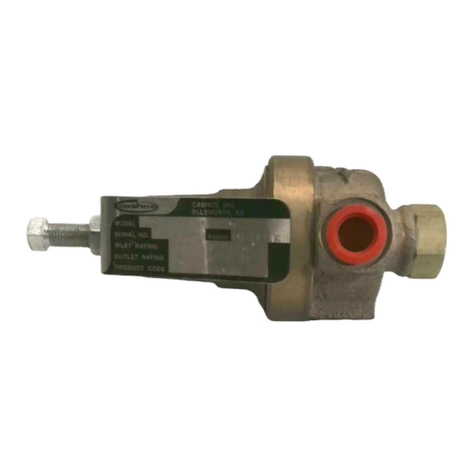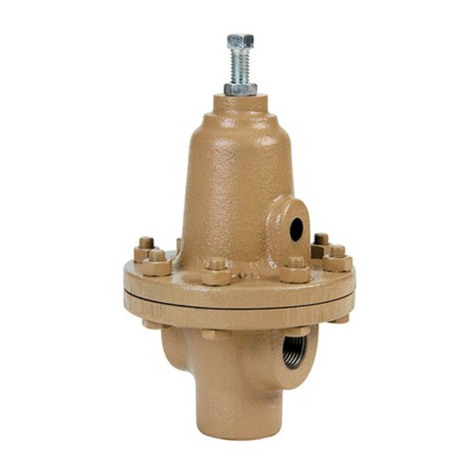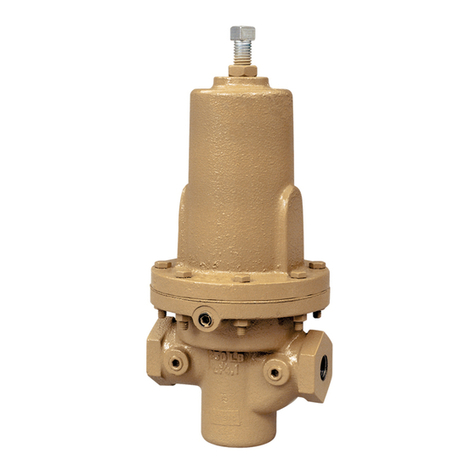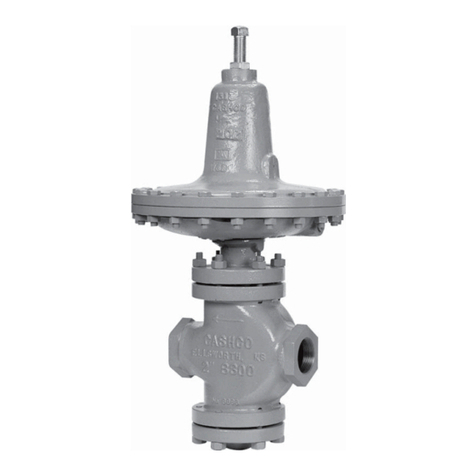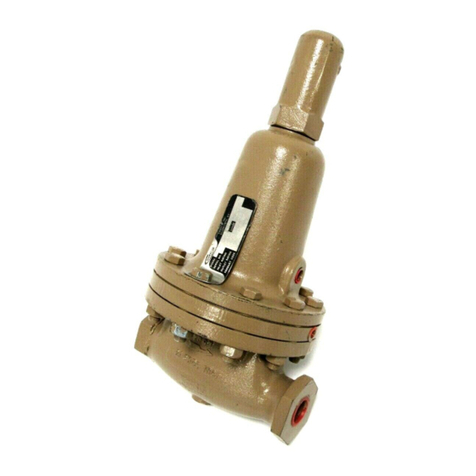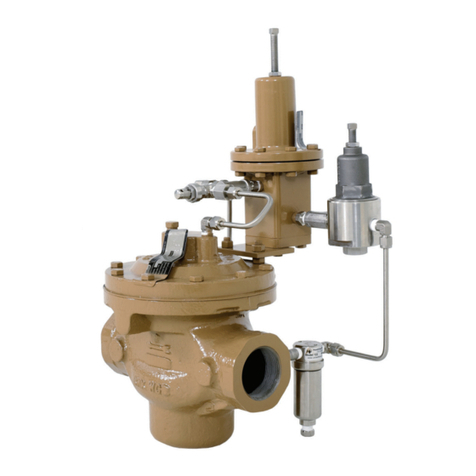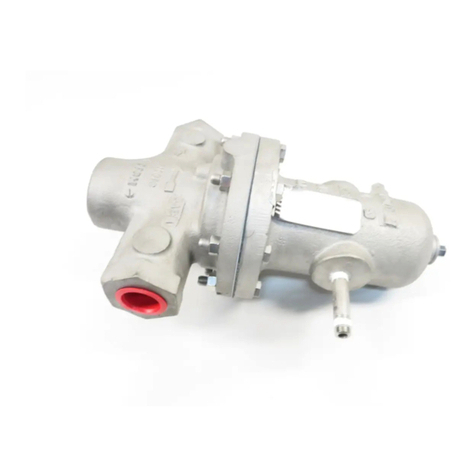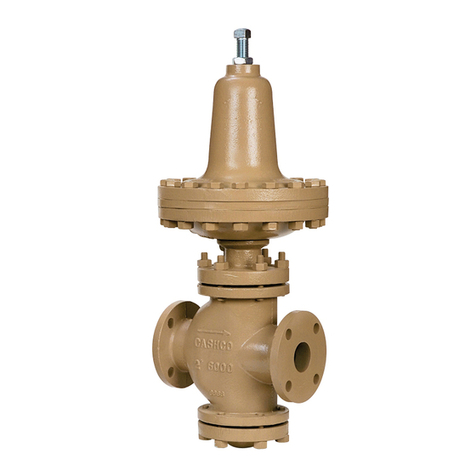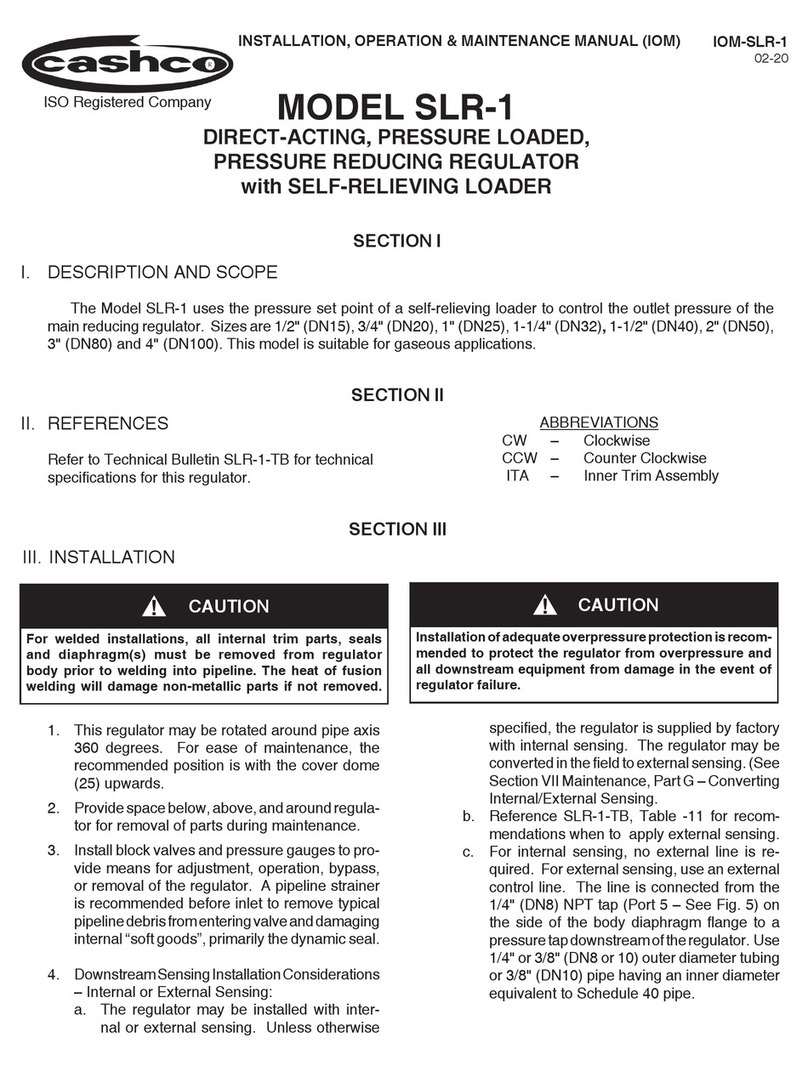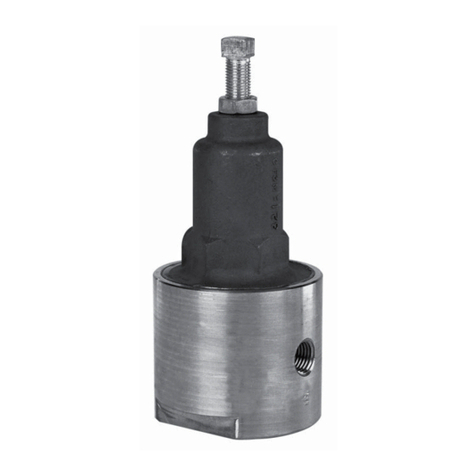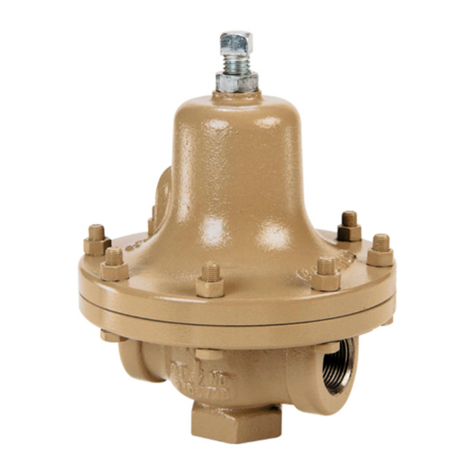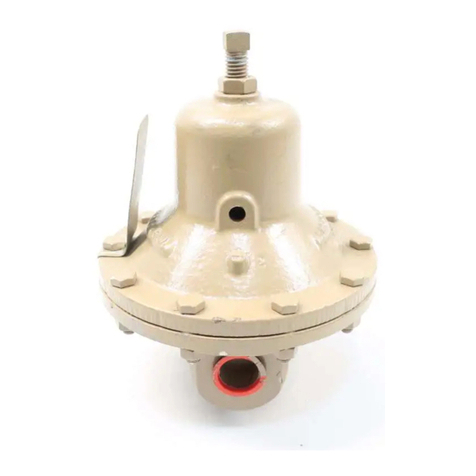
IOM-3381/43814
2. For SST body (1) and SST spring chamber
(2), use thread lubricant to minimize potential
of seizing threads.
D. Special Instructions for Diaphragm Removal:
1. If the TFE coated diaphragm (13) is utilized on
the Model 4381, the TFE coating is the wetted
side of the diaphragm.
2. If the Option-2 is utilized, the adjusting screw
(8) and locknut (11) are replaced with a
handwheel (18) and lock nut (11). With the
Option-22 panel mounting w/handwheel,
the adjusting screw (8) and lock nut (11) are
replaced with a handwheel (18), lock nut (11)
and a panel mounting nut (19).
3. If the Option-1+6 is utilized with metal
diaphragms, there will be one diaphragm
gasket (14) on top of and one below the
diaphragm(s).
11. Formetaldiaphragm(s)(13),placediaphragm
gasket (14) into body (1) recess (none
required for composition diaphragm). Set
diaphragm subassembly into the body.
12. Place the range spring (17) over the pusher
plate nut (10) of the diaphragm subassembly.
13. Place multipurpose, high temperature grease
into depression of spring button (5) where
adjusting screw (8) makes contact. Set spring
button (5) onto range spring (17); ensure
spring button (5) is laying flat on top of spring.
14. Rotate the spring chamber (2) CW by hand
into the threaded portion of the body (1)
ensuring not to cross thread. Continue
rotating CW into the body and tighten
approximately 1/4 turn past initial contact with
the diaphragm. Use caution when tightening
the spring chamber, contact with the wrench
on the vent hole boss may damage it.
15. Reinstall adjusting screw (8) with locknut (11)
into the spring chamber (2).
16. Pressurize with air and spray liquid leak
detector to test around body (1) and spring
chamber (2) for leakage. Ensure that an outlet
pressure is maintained during this leak test
of at least mid-range spring level; i.e. 20-80
psig (1.4-5.5 Barg) range spring, 50 psig
(3.4 Barg) test pressure minimum.
C. Diaphragm Replacement - Model 4381:
1. Procedures are the same as Model 3381.
2. Loosen and remove body cap.
3. Remove piston spring (7), and piston (16).
Note that the seat and piston guide are
integral parts of the body (1) casting. Inspect
integral seat and guide for excessive wear,
especially at seat surfaces. Replace if worn,
nicked or depressed. If integral seat is nicked,
use seat lapping compound to remove.
Valves equipped with Opt-4 Stabilizer will
have the u-cup stabilizer seal (30) removed
when the piston (16) is removed from body
(1). Remove stabilizer seal (30), if installed.
NOTE: When piston (16) assemblies are
used with composition seats, Cashco, Inc.
does not recommend attempting to remove
the composition seat. If composition seat is
damaged, replace entire piston assembly.
standard #S-1134. For regulators originally
supplied as “cleaned for Pharmaceutical
and Food applications” Options 4381-37
and 4381-37S, maintenance must include a
level of cleanliness equal to Cashco cleaning
standard #S-1576. Contact factory for details.
10. Reassemble diaphragm subassembly by
placing pusher plate seal (15) over threaded
post of pusher plate (4), placing diaphragm(s)
(13) and pressure plate (3) over the threaded
post. Assure the pressure plate (3) is
placed with curved outer rim down next to
the diaphragm (13) surface. Place a thread
sealant compound on the threads of the
pusher plate post (4) prior to tightening the
pusher plate nut (10) to the following torque
values:
Sizes Diaphragm Torque
In-lbs (N-m)
ALL Metal 60 (6.8)
Composition 15 (1.7)
CAUTION
To prevent damage to the body, use soft jaws when
securing body in a vise. Position body so that vise closes
over the inlet and the outlet connections.
CAUTION
Option-1+6 contains single diaphragm construction. In
the event of diaphragm failure, the process fluid will mix
with the loading fluid. Please alert your representative so
an alternative product can be selected.
E. Trim Replacement:
1. Secure body (1) in a vise with the body cap
(6) oriented up and the spring chamber (2)
downwards.
